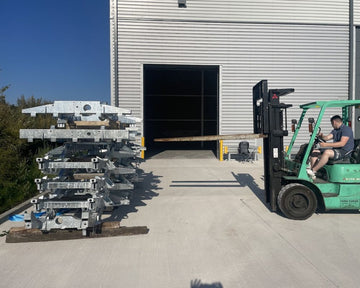Original Land Rover bulkheads were manufactured from 1mm pressed steel sections and panels. With using only 1mm thick sheet steel, Land Rover added many return folds along section edges to add strength to the bulkhead. These were then spot welded in place.


This double skinning throughout the bulkhead has proven to be an Achilles heel. Two layers of steel placed one on top of the other allows for capillary action, with temperature change, to suck moisture between the plates. Over time this trapped moisture causes rot and corrosion that spreads along the joints corroding from the inside out.

Why is the Quality achieved by restoring bulkheads unsatisfactory?
Step 1
Shot blasting to remove rust, corrosion, scale and paint.
Flaw: Shot blasting cannot get between the steel layers and overlaps, so these areas remain full or rust and corrosion.
Step 2
Acid dipped to clean & treat the steel in preparation for galvanising.
Flaw: The acid does not breakdown or remove any remaining paint.
Step 3
The bulkhead is then submerged in molten zinc galvanise.
Flaw: Remaining paint burns to ash due to the heat of the molten zinc galvanise. This ash (burnt paint) no longer protects the steel beneath but instead harbours moisture, leading to corrosion over time. Galvanise only bonds to clean steel, not ash.
Flaw: Due to the original bulkhead sections being spot welded into place and made from only 1mm sheet steel, the entire bulkhead is prone to distortion due to the rapid heating up and cooling down during the galvanising process.
How are Shielder Bulkheads different?
- A shielder bulkhead is made from 1.5mm mild steel with minimal overlaps.
- Our bulkheads are reinforced at the door pillar and puddle welded as opposed to spot welded.
- Our design eliminates galvanising distortion.
- Our new pressed pillars cut down on paint preparation time.
- All shielder bulkheads come with a 5-year manufacturer warranty.
